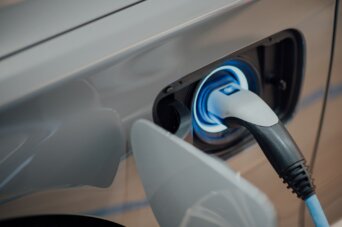- About
- Topics
- Picks
- Audio
- Story
- In-Depth
- Opinion
- News
- Donate
- Signup for our newsletterOur Editors' Best Picks.Send
Read, Debate: Engage.
| topic: | Air Pollution |
|---|---|
| located: | China |
| editor: | Stella Tsang |
Without a doubt, 2022 is a breakthrough year for Chinese carmaker BYD (比亞迪) as its new energy vehicle (NEV) sales have soared 134 percent year-over-year to 106,042 cars in April, right after the company stopped producing fuel-powered automobiles in March.
But around the same time, BYD also drew attention for its factory in Changsha city, in Hunan province, which, since mid-April, has been accused of causing nosebleeds among children living nearby due to its emissions. The allegations first surfaced on state media’s “Message Board for Leaders,” and were later followed by local protests, where parents questioned whether the factory is too close to the neighbourhood.
BYD responded by claiming that such allegations were “malicious and groundless.” It said the emissions of the Changsha division, which has been operating since 2012 and has around 17,000 employees, were in line with China’s standards. The company had also filed police reports over the complaints about nosebleeds, and the case is under investigation by the Changsha city authorities.
In mid-May, following BYD's dispute, another NEV manufacturing project in Guangzhou city belonging to Guangqi Honda also sparked controversy because of its proximity to the neighbouring community.
In fact, similar incidents happen from time to time in the country, and it is often difficult to show a clear link between industrial pollution and health damages. In the cases above, local media reports have not only quoted national standards (which requires the distance between automobile factories and residential areas to be at least 300 metres), but also measured the real distance on a map to see if the requirements were met.
However, one should not forget that a thorough scientific investigation is needed to examine additional factors, such as wind direction. And in China, major projects are required to hire a third-party vendor to provide an Environmental Impact Assessment (EIA) and submit it to the authorities in order to gain approval for construction. However, once the project is permitted, the third-party no longer takes part in the result, which means the implementation and monitoring of the environmental protection measures is performed by the company itself.
With the suffering of China's economy under the threat of COVID-19 lockdowns, critics believe that the industrial sector, especially key projects like NEVs, will be boosted by the government for a more rapid economic recovery. In the meantime, whether the authorities could be determined enough to enforce the EIA and its follow-ups, ensuring they are carried out in a professional and impartial manner, is crucial to the public's interest.
Photo by Chuttersnap

